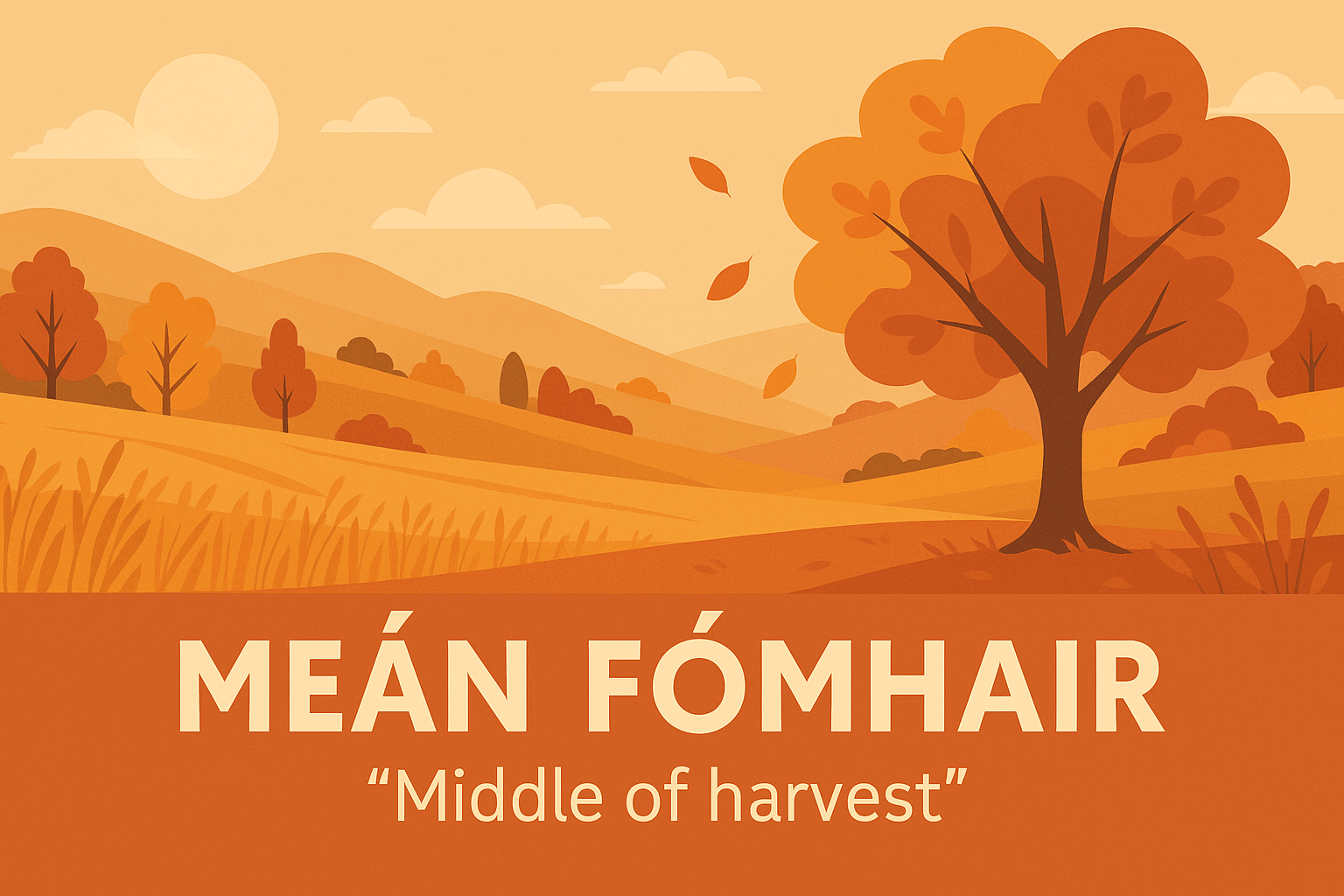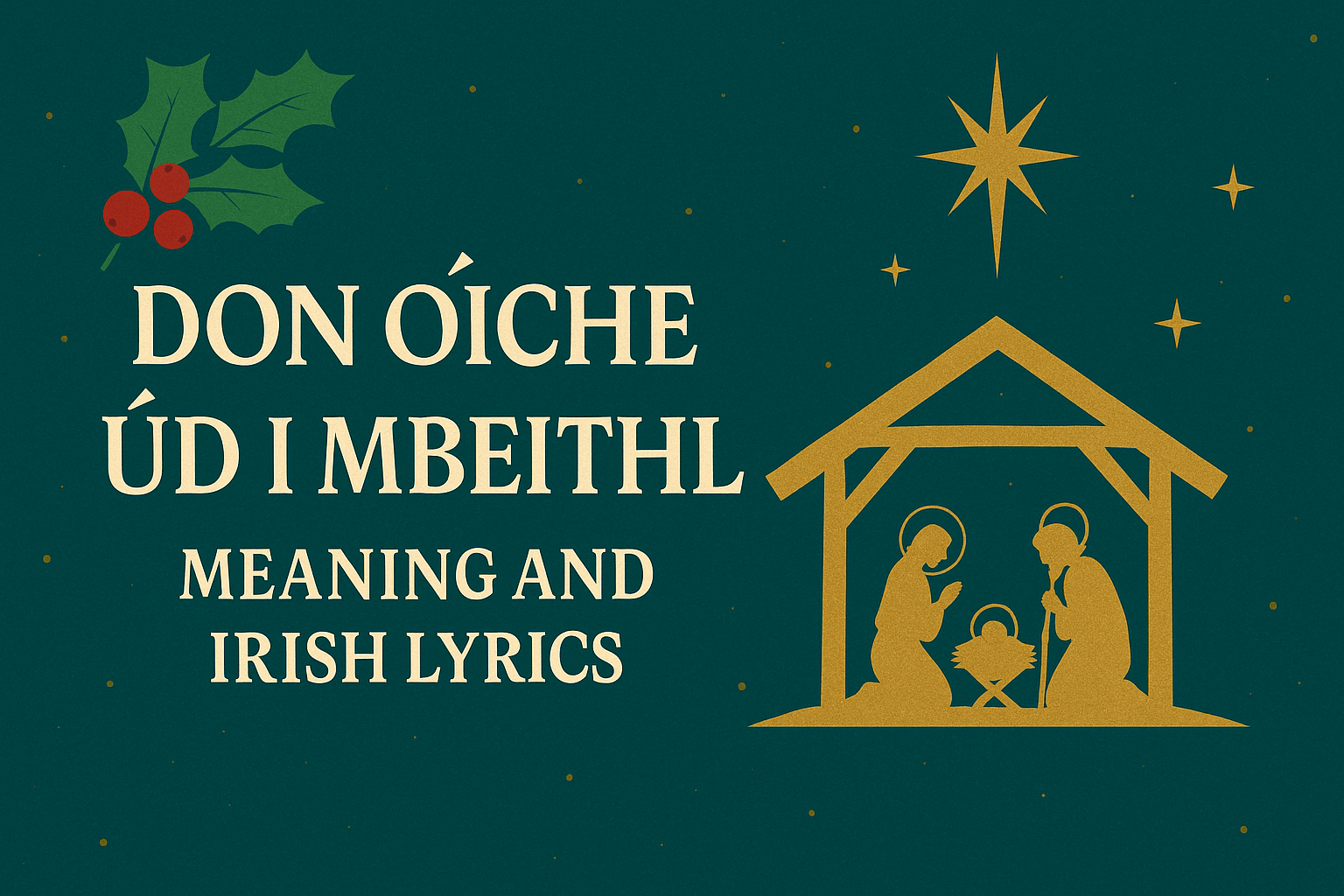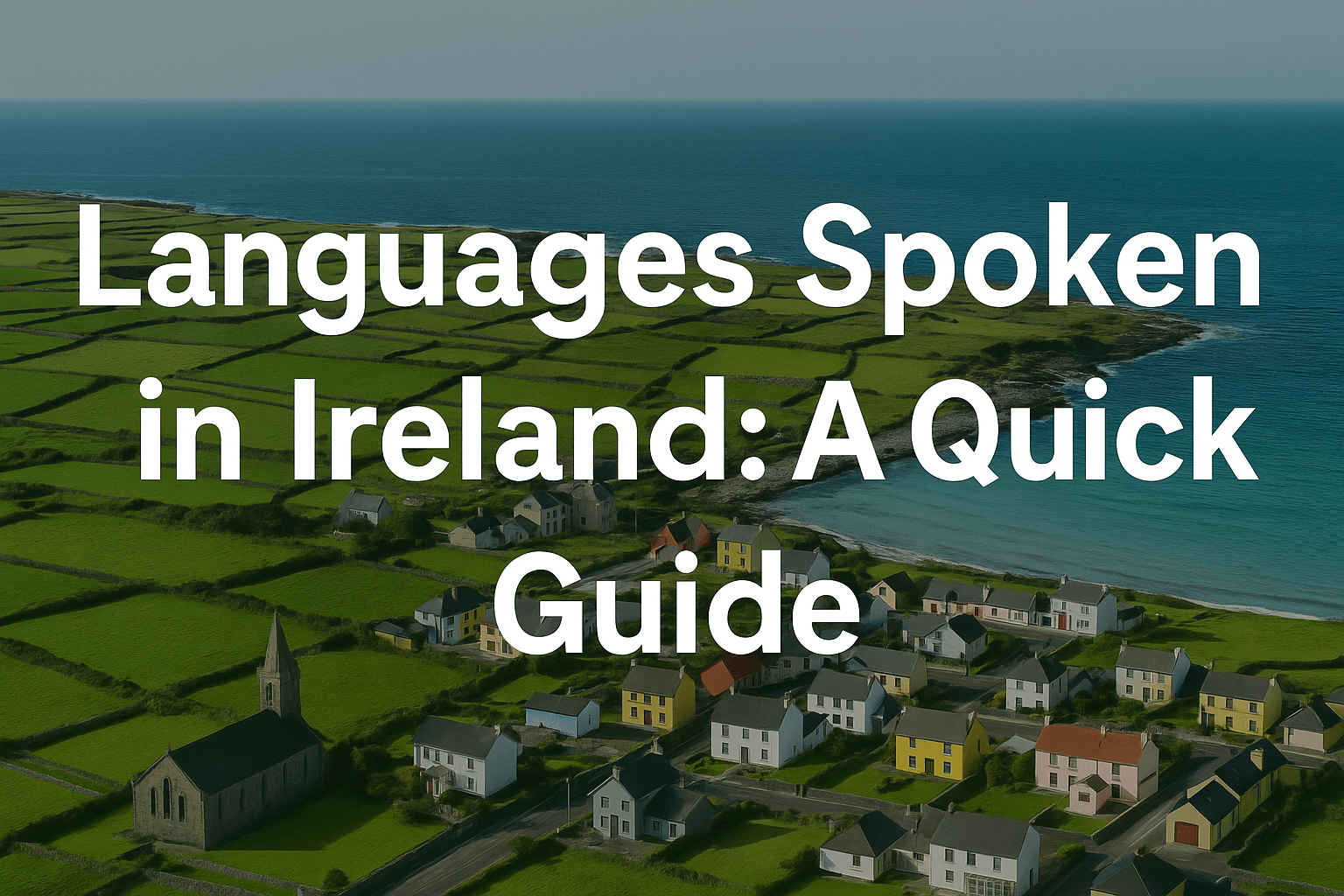Among Ireland’s vast collection of traditional songs, few are as charming and evocative as “Óró Mo Bháidín” — a lilting Irish tune that celebrates the sea, travel, and homecoming. The phrase Óró Mo Bháidín translates roughly to “Oh, my little boat!”, and like many Gaelic songs, it captures both the poetic spirit and musical rhythm of the Irish language.
Whether sung in classrooms, at gatherings, or during traditional seisiúin ceoil (music sessions), Óró Mo Bháidín has been passed down through generations as a song of joy, longing, and connection to the sea — themes deeply rooted in Irish identity.
In this post, we’ll explore the meaning, history, Irish lyrics, and translation of Óró Mo Bháidín, as well as how it can help learners practice pronunciation and vocabulary. We’ll also show how tools like Gaeilgeoir AI make it easier than ever to understand and enjoy Irish songs like this, even if you’re just starting your Gaeilge journey.
The Meaning of Óró Mo Bháidín
At its core, Óró Mo Bháidín is a folk song celebrating the sea voyage of a small boat (báidín means “little boat”). Versions of the song have been found in both Connemara and Donegal, with slightly different lyrics, but the tone is consistent — joyful, rhythmic, and filled with love for Ireland’s coastal life.
The refrain “Óró, mo bháidín” expresses affection, similar to saying “Oh, my little boat!” or “My dear little boat!” It reflects the Irish poetic tradition of personifying nature — in this case, giving emotional weight to the boat as a symbol of freedom, adventure, and return.
Irish seafaring songs often carry deeper meanings: a báidín might represent the spirit, the homeland, or even one’s faith, depending on the singer’s perspective.
Irish Lyrics of Óró Mo Bháidín
Óró mo bháidín, báidín, báidín,
Óró mo bháidín, báidín bán.
Óró mo bháidín, báidín, báidín,
Óró mo bháidín, báidín bán.
Báidín Fheidhlimidh d’imigh go Tír Chonaill,
Báidín Fheidhlimidh is Feidhlimidh ann.
Báidín Fheidhlimidh d’imigh go Tír Chonaill,
Báidín Fheidhlimidh is Feidhlimidh ann.
English Translation
Oh, my little boat, boat, little boat,
Oh, my little boat, my little white boat.
Oh, my little boat, boat, little boat,
Oh, my little boat, my little white boat.
Feidhlimidh’s little boat went to Tír Chonaill,
Feidhlimidh’s little boat with Feidhlimidh in it.
Feidhlimidh’s little boat went to Tír Chonaill,
Feidhlimidh’s little boat with Feidhlimidh in it.
Who Was Feidhlimidh?
The name Feidhlimidh (Phelim) is an old Irish name meaning “ever good” or “constant.” While the exact Feidhlimidh of the song’s lyrics isn’t known, the name appears in several Gaelic tales and historical records — including Feidhlimidh Fionn mac Ghuill, a legendary figure of Irish lore.
In the context of Óró Mo Bháidín, Feidhlimidh is often seen as a symbolic or archetypal traveler, embodying the adventurous Irish spirit and the connection to the sea that defines much of Ireland’s culture.
For readers interested in similar cultural and linguistic histories, see our Ancient Irish Language Guide for how these early names and expressions shaped modern Irish.
Origins and Historical Context
Like many Irish folk songs, Óró Mo Bháidín likely originated in oral tradition, passed down through Gaeltacht (Irish-speaking) communities. Its repetitive structure made it easy for children to learn, which is why it’s often taught in Irish schools today.
The melody, in 6/8 time, is lively and danceable, giving it a distinctive Celtic swing that makes it popular at cultural events and Irish language gatherings.
Musical Heritage
- The song likely emerged along Ireland’s Atlantic coast, where maritime life was central to daily survival.
- It celebrates both the journey and the return home, reflecting Ireland’s history of emigration and reunion.
- The phrase “báidín bán” (little white boat) may refer to the curragh, a small Irish boat made of wooden frame and canvas — an enduring symbol of Irish craftsmanship and endurance.
For more insight into traditional Irish maritime culture, check out our feature on Irish Bagpipes and Traditional Instruments, which explores how songs and instruments evolved together in Irish heritage.
Language Notes: Understanding the Irish in Óró Mo Bháidín
Songs like Óró Mo Bháidín are an excellent entry point for learning Irish grammar and pronunciation. Let’s break down some key linguistic elements:
1. The Diminutive Suffix “-ín”
The word bád means “boat,” but adding -ín makes it “little boat” (báidín). This is a common feature in Irish:
- Cailín = little girl (from cail – woman)
- Péintín = little painting
2. The Vocative Particle “Mo”
Mo bháidín means “my little boat.” Notice that bád changes to bháid — this is lenition, a softening of the initial consonant after possessive pronouns like mo (my).
3. Repetition for Musical Effect
Irish songs often use repetition for rhythm and emotion. The recurring “báidín, báidín, báidín bán” gives a melodic, hypnotic feel — perfect for teaching pronunciation and rhythm to new learners.
To better understand these grammatical features, try our Irish Pronouns Guide for a breakdown of how small words like mo, do, and a change surrounding words.
Cultural Meaning and Symbolism
The song may seem simple, but its deeper meanings reveal much about Irish worldview and identity.
1. The Sea as a Metaphor
Ireland’s connection to the sea runs deep. The báidín represents not only physical travel but also emotional or spiritual journeys — love, loss, and return.
2. The Journey Home
The recurring theme of traveling to Tír Chonaill (modern-day Donegal) speaks to the idea of coming home — a powerful image in Irish music, reflecting centuries of migration.
3. Community and Continuity
Singing Óró Mo Bháidín links modern Irish speakers to their ancestors. The song’s endurance across generations shows the living continuity of the Irish language, still sung and celebrated today.
How Óró Mo Bháidín Helps You Learn Irish
Learning through song is one of the most natural and effective ways to absorb a new language, and Óró Mo Bháidín is an ideal example. Here’s why:
1. Repetition Builds Retention
Because of its rhythmic structure, you’ll naturally remember phrases like mo bháidín and báidín bán without rote memorization.
2. Melody Reinforces Pronunciation
Irish has sounds not found in English (like bh and ch). Singing helps you train your ear to these patterns in an enjoyable way.
3. Cultural Context Makes Learning Engaging
Understanding the story behind songs connects you emotionally to the language — turning study into cultural exploration.
If you’re new to Irish and want to start learning through authentic cultural content, check out our Irish Language Lessons for Beginners.
How Gaeilgeoir AI Enhances Irish Language Learning
At Gaeilgeoir AI, we believe technology should amplify tradition — not replace it. Our platform combines AI-powered language tools with cultural content like songs, idioms, and proverbs to create an immersive learning experience.
With Gaeilgeoir AI, you can:
- Practice pronunciation using speech recognition tuned to Irish phonetics.
- Learn vocabulary in real-world contexts, like songs or poetry.
- Get instant feedback and explanations from an AI tutor trained in Irish grammar.
- Connect with a community of learners passionate about preserving Irish heritage.
Start learning Irish through songs like Óró Mo Bháidín by signing up at learn.gaeilgeoir.ai.
Singing the Soul of Ireland
Óró Mo Bháidín may seem simple, but within its lilting melody lies centuries of Irish history, language, and emotion. Each time it’s sung, the song connects learners, musicians, and communities across Ireland and beyond — a living thread in the tapestry of Gaeilge.
By learning and singing Óró Mo Bháidín, you’re not just memorizing words — you’re participating in a centuries-old tradition that keeps Irish language and culture alive.
So the next time you hum Óró Mo Bháidín, let it remind you of Ireland’s poetic heart and the journey of learning Irish — one beautiful word (and song) at a time.




